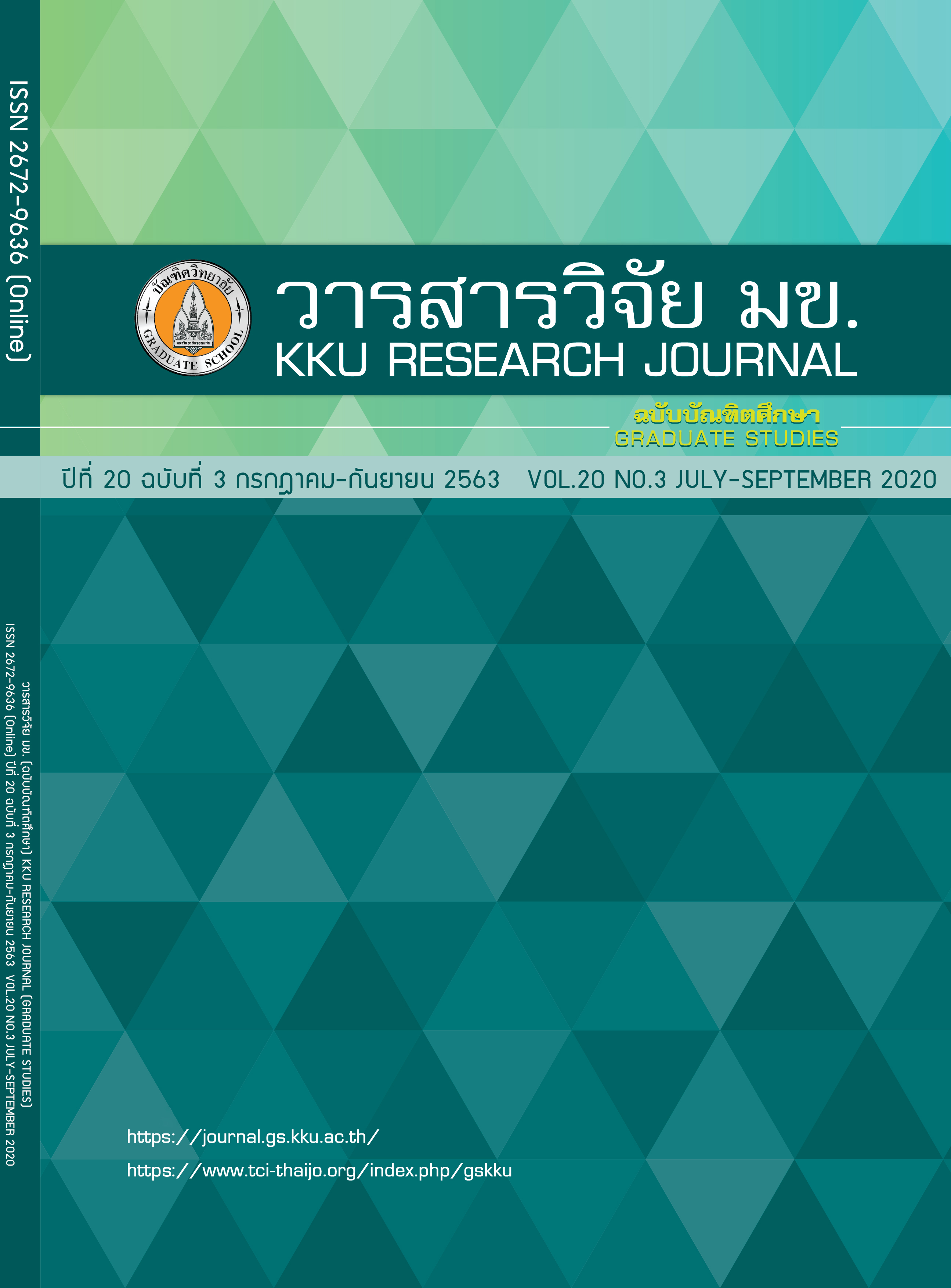The Use of Bacillus pseudofirmus ATCC 700159 to Improve the Mechanical Properties of Concrete
Keywords:
concrete, Bacillus pseudofirmus ATCC 700159, Pre-cracksAbstract
This research aimed to study the use of Bacillus pseudofirmus ATCC 700159 in the concrete specimen. The experiment on varying bacteria ratio of 10-40 wt% into the specimens was conducted to improve the compressive strength properties of concrete and investigate new compound after bacteria being added into concrete specimens. The results obviously indicated that bacteria ratios had no negative effect on compressive strength of the concrete specimen. When creating the internal pre-crack of specimen by 40% of maximum compressive strength, it was found that the bacteria could produce a new compound and thus, increased in compressive strength. This result was confirmed by XRD, FTIR and SEM analysis which showed the most CaCO3 amount in the BC-40 specimen.
References
Chaturvedi S, Chandra R, Rai V. Isolation and characterization of Phragmites australis (L.) rhizosphere bacteria from contaminated site for bioremediation of colored distillery effluent. Ecol Eng. 2006;27(3):202–207.
Gross A, Kaplan D, Baker K. Removal of chemical and microbiological contaminants from domestic greywater using a recycled vertical flow bioreactor (RVFB). Ecol Eng. 2007;31(2):107–114.
Jugnia LB, Cabral AR, Greer CW. Biotic methane oxidation within an instrumented experimental landfill cover. Ecol Eng. 2008;33(2):102–109.
Laemmli UK. Cleavage of structural proteins during the assembly of the head of bacteriophage T4. Nature. 1970;227(5259):680–685.
De Muynck W, De Belie N, Verstraete W. Microbial carbonate precipitation in construction materials: A review. Ecol Eng. 2010;36(2):118–136.
Baxter R, Hastings N, Law A, Glass EJ. Concrete Microstructure, Properties, and Materials. Vol. 39, Animal Genetics. 2008. 561–563 p.
COGUANOR. Compressive Strength of Cylindrical Concrete Specimens Guatemalteca. 2012;04(502):1–7.
Jonkers HM, Schlangen E. Self-healing of cracked concrete: A bacterial approach. 6th Int Conf Fract Mech Concr Concr Struct. 2007;3:1821–1826.
Yousuf M, Mollah A, Palta P, Hess TR, Vempati RK, Cocke DL. Chemical and physical effects of sodium lignosulfonate superplasticizer on the hydration of portland cement and solidification/stabilization consequences. Cem Concr Res. 1995;25(3):671–682.
Mollah MYA, Lu F, Cocke DL. An X-ray diffraction (XRD) and Fourier transform infrared spectroscopic (FT-IR) characterization of the speciation of arsenic (V) in Portland cement type-V. Sci Total Environ. 1998;224(1):57–68.
Kontoleontos F, Tsakiridis P, Marinos A, Katsiotis N, Kaloidas V, Katsioti M. Dry-grinded ultrafine cements hydration. physicochemical and microstructural characterization. Mater Res. 2013;16(2):404–416.
Ylmén R, Jäglid U, Steenari BM, Panas I. Early hydration and setting of Portland cement monitored by IR, SEM and Vicat techniques. Cem Concr Res. 2009;39(5):433–439.
Yu P, Kirkpatrick RJ, Poe B, McMillan PF, Cong X. Structure of Calcium Silicate Hydrate (C-S-H): Near-, Mid-, and Far-Infrared Spectroscopy. J Am Ceram Soc. 2004;82(3):742–748.
Choi BS. Transformation of CaCO3 to single crystalline micro/nanowires. J Ind Eng Chem. 2014;20(1):96–96.
Sharp EL, Al-Shehri H, Horozov TS, Stoyanov SD, Paunov VN. Adsorption of shape-anisotropic and porous particles at the air-water and the decane-water interface studied by the gel trapping technique. RSC Adv. 2014;4(5):2205–2213.



